#arthropod eggs
Explore tagged Tumblr posts
Text

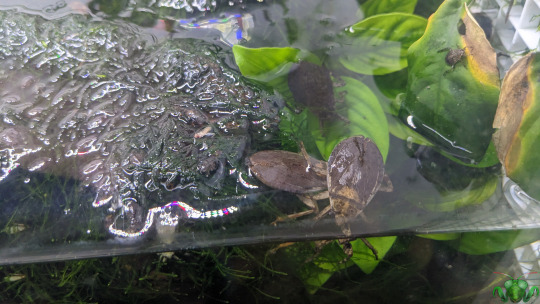

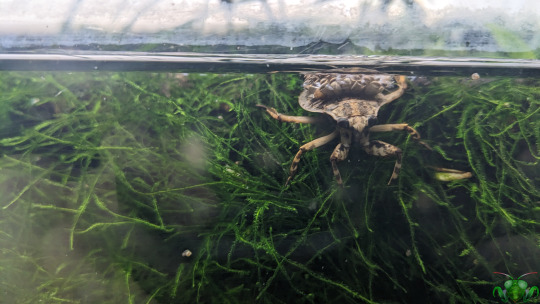

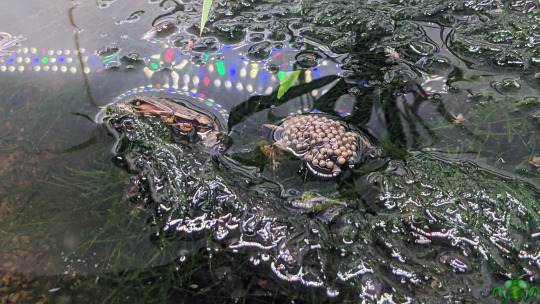



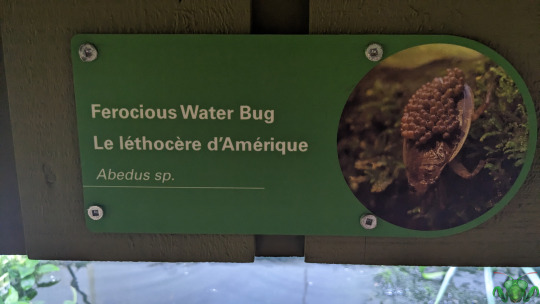
Ferocious Water Bug - Abedus sp.
I was so happy to visit the Toronto Zoo last weekend. It had been a long time since my last visit and it was wonderful to spend the day with some of my dearest friends! In addition to all the delightful outdoor mammalian and avian exhibits, there are plenty of indoor terrarium-based habitats to enjoy full of exotic and/or strange reptiles, amphibians, and insects (obviously) to discover. There are five species in total that I'll be covering over the next few weeks, beginning with a new branch of the Hemipteran order for the blog: Giant Water Bugs (Belostomatidae)! This exhibit mainly showcases the adults, but there are a few nymphs hiding around. As their common name suggests, these large insects make aquatic (freshwater) environments their primary habitat and are well adapted to it despite ultimately being creatures of the land. They all have a flattened, oval-shaped hydrodynamic body, flattened legs that can can tuck in and row, large eyes to visualize a wide view of their aquatic environment, and enlarged raptorial forelegs to seize prey that swims by. Stay clear of those claws, as anything caught in them gets painfully jabbed by the curved rostrum! Such a puncture has earned them the nicknames: "Toe-Biter", "Fish Killer" and "Alligator Flea". Furthermore, like their distant Nepomorpha cousin - the Backswimmer - Giant Water Bugs breathe air, and thusly need to bring it underwater with them since they lack a full set of gills.
To facilitate underwater respiration, these Bugs have adapted a rear abdominal respiratory siphon that they stick out of the water to obtain air while submerged. Yes, a butt-snorkel is the tool for the job! This is why many of the individuals here appear to be tilted as they sit in the water's flora. With larger specimens, it could be mistaken for a stinger, while different species use different types of snorkels to obtain air. From my research, Abedus Water Bugs use two reduced rear-tubes to obtain air and then store it underneath their forewings; they can store quite many a bubble due to their reduced wings beneath, effectively trading their ability to fly for an efficient scuba system. With efficient energy expenditure, they can remain underwater for minutes to hours, and thus have more time for hunting and other activities. Speaking of the latter, you may have noticed a few individuals covered in nodules here. These are male specimens. Females attach their eggs to the backs of males, and the latter will protect them...until they hatch. After they hatch, Abedus nymphs become fair game to hunt, and the nymphs share that behavior, with nymphs further along in development hunting and snatching smaller instars! With the number of eggs here, it looks like the zoo may have a feeding frenzy on its hands! When they aren't eating each other, Giant Water Bugs will eat anything they can grasp (even animals much larger than themselves, similar to Jagged Ambush Bugs) including struggling land insects, snails, tadpoles and fish.
Since the insects belong to the Toronto Zoo, I’ve marked them with the Mantis icon. Pictures were taken August 27, 2023 at the Toronto Zoo with a Google Pixel 4. Please go and visit the animals (insects very much included).
#jonny’s insect catalogue#ontario insect#giant water bug#abedus#abedus water bug#abedus giant water bug#toe biter#aquatic bug#aquatic insect#abedus sp#hemiptera#heteroptera#insect#insect eggs#toronto#toronto zoo#august 2023#2023#nature#entomology#invertebrates#arthropods#arthropod eggs#animals#photography
9 notes
·
View notes
Text
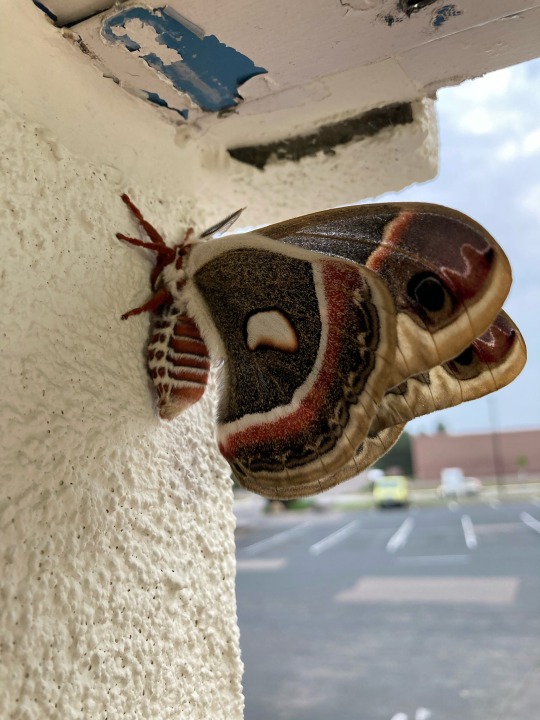

I was recently extremely blessed in being able to finally see one of my “bucket list bugs” as I’ve started calling them. (Not a real list, as I’m never one to be organized…)
But a friend alerted me to the presence of this big beauty and J gave me a leg up to take a closer photo with my measly phone camera and subpar photography skills. I found some eggs she had laid on the wall and I scooped them up in hopes I can look after them. She hung around with her admirers for a good half hour before deciding she’d lingered long enough and flew off into the literal sunset.
Cecropia moth, Hyalophora cecropia, largest moth species in North America. Bug haters, don’t interact!
#insect#moth#cecropia moth#silk moth#bug#invertebrate#arthropods#tw entomophobia#lepidoptera#most beautiful of all chonks#I love all moths but THIS ONE#had a dream of seeing one since I was little and read a book about them#need to paint her! or something!#not certain in my ability to raise her eggs but I want to try#they were nowhere near a tree where they were laid so yeah#a passerby had a proper camera and took photos too#and I got to info dump about moths and bugs in general#I can’t help it they’re my thing!
1K notes
·
View notes
Text
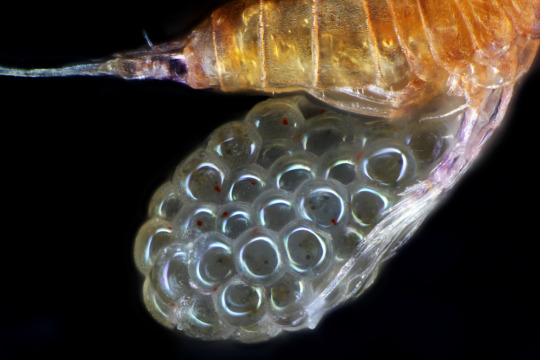
Copepod
#copepod#copepoda#egg sac#wikipedia#wikipedia pictures#nature#animals#marine life#marine biology#marine animals#sea creatures#sea critters#fish lice#arthropods#crustacean#arthropoda#multicrustacea#oceancore#ocean aesthetic#ocean life#ocean animals#ocean#zoology
37 notes
·
View notes
Text
today's invertebrate.........sarcotretes
after winning a bet with other siphonostomatoids on whether the mucus man will look left or right, sarcotretes was chosen to find a beast and latch on to its flesh forever, a glorious fate sought after by all her peers. after a long and tiring search, she finally found one, a large shimmering sternoptychid
using her barbed mouthparts, she clung to its flesh and slowly turned into a red unidentifiable mass! now her friends are all so jealous of her beauty and constantly gossip about her!!! but she does not care, because she has never seen them since that bet
I think that's for the better, because if she did see them again then they probably would've attacked her out of envy
.......jollyness rating: 28% blue and red are what you want for the job



images from this site!
#invertebrates#arthropods#deep sea#crustacean#copepod#parasites#parasitism does things to a crustacean.......#btw the long tentacles are egg masses or something like that
7 notes
·
View notes
Text
unfortunately spiders are a pretty popular part of traditional gnomish cuisine
#gnomes have domesticated giant spiders for silk production#spiders lay dozens or hundreds of eggs depending on the species-- in nature this is to account for things like#sibling cannibalism and just the general extreme mortality rate of small vulnerable invertebrates#but the point is they lay way way more eggs than are ever meant to become adult spiders#so. spider eggs and the first several instars of domestic giant spiders are for eating#gnomes' diet is partly insectivorous in general anyway because of their size and habitat#but spiders are up there with bees as arthropods specifically raised for agriculture as opposed to those collected in the wild#like how silkworms are a popular snack for elves in certain regions 😌#gnome stuff#worldbuilding
18 notes
·
View notes
Text
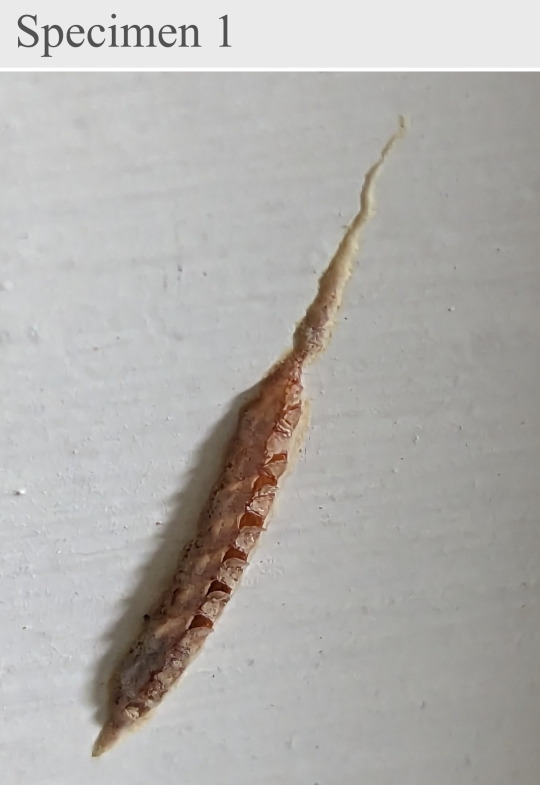
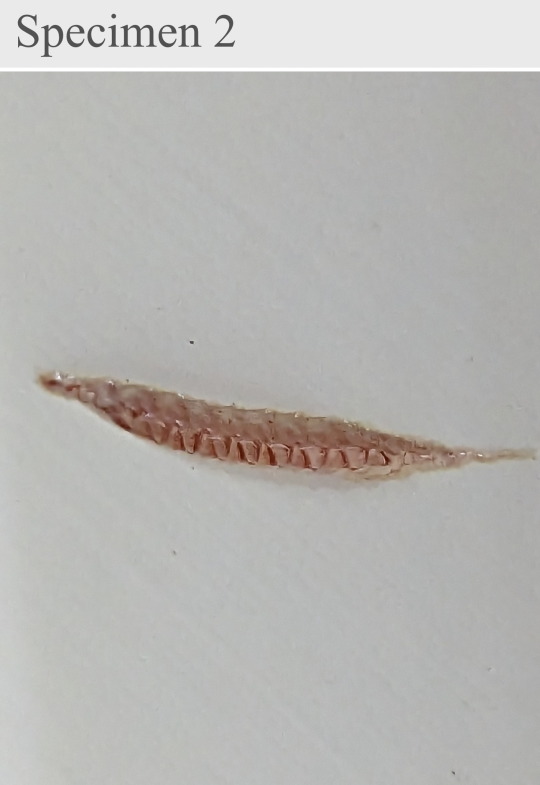

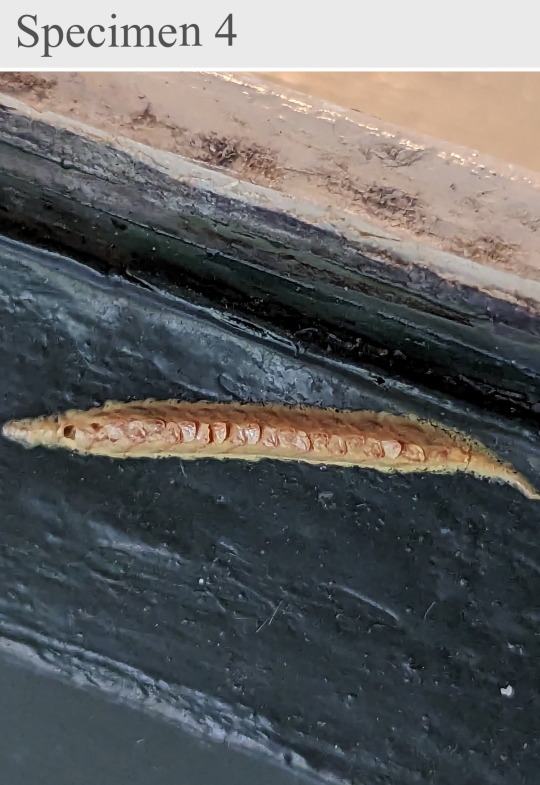


Collection of Snake Mantis Oothecas
Kongobatha diademata
21/03/23
#Kongobatha diademata#Snake Mantis#Kongobatha#snake mantises#oothecas#eggs#Mantodea#Mantises#invertblr#invertebrates#Arthropods#Arthropoda#bugs#bugs tw#bugblr#insects#insecta#insects tw#insect#insectblr#entomology
37 notes
·
View notes
Text



I discovered this adorable mother earwig with her clutch of eggs under a rock recently. Unlike most nonsocial insects, earwigs are excellent mothers. The female guards the eggs, cleans them, and keeps them warm. She doesn't even leave to eat. After about a week, the eggs hatch, and the female continues to protect, feed, and take care of her nymphs until their second molt (adulthood is 5-6 molts depending on the species). I felt bad for disturbing this lovely lady, so I very carefully put the rock back after taking a few pictures. (Other than the nesting behavior, you can tell this is a female because of the straight forceps. Males generally have curved ones. Also fun fact: earwigs can't really hurt you with their butt pinchers, and they don't want to be anywhere near your ear.) Forficula dentata, Northern California
#earwig#Forficula dentata#Dermaptera#cute#mother#expectant mother#eggs#insect#bug#nature#bugs#nature photography#biodiversity#animals#inaturalist#arthropods#bugblr#entomology#insect appreciation#invertebrates#butt pincher#northern california#macro photography#macro#mother of the year#critter#seriously though I think these pictures are adorable
11 notes
·
View notes
Note
König noticing that his moth girl is getting even more lethargic somehow, eating more than usual and never leaving this cave of pillows and blankets that showed up overnight
He’s worried sick about her! Trying to press about what’s wrong but all he gets are mumbled about how her tummy aches and how she’s sleepy
Then one day.. she’s better. Just, out of the blue. He checks out the little den she’s made and finds.. a clutch of eggs
(Whether or not they’re fertilized is up to interpretation ;] )
- @murderkittyz
I LOVE THIS!!!! Lifelong dream of mine, laying a bunch of eggs.
cw: hybrids and egg laying
I imagine the timeline for this is insanely condensed because she’s a moth. So like she’s all tired and hungry for a day or two, enough for König to get worried. He’s thinking about calling the breeder that he got her from. She won’t come to bed, just huddled in her little nest. He brings her food, hand feeding her, but she sleeps almost all day.
And then the next day… she’s completely fine. Normal. Doesn’t even tell him anything. Just amusing herself as normal. He pulls some blankets off of her pile to see the neatly laid little eggs. Soft and sticky and just a little shiny. And there’s like 50 of them. He takes a picture, calls Horangi’s friend— he just wants to know if they’re… viable.
And as cute as it would be for König to have to take care of like 50 caterpillars, I think she’s too distant from a standard human genetically for them to interbreed. If she was a mammalian hybrid there might be a chance, but arthropods are just too different.
It’s a little disappointing… but it’s for the best. Because they don’t make birth control for mothgirls and he’s told she might do this like 4 times a year. That would be a lot of babies.
#writing#cod fanfic#konig cod#konig x you#konig x reader#konig#könig x you#könig x reader#könig cod#könig#moth!reader#hybrid au#hybrids#cw eggs
492 notes
·
View notes
Text
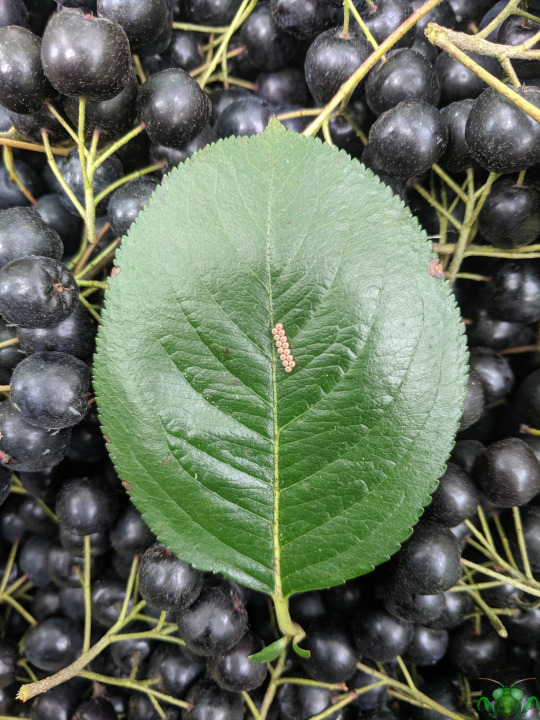
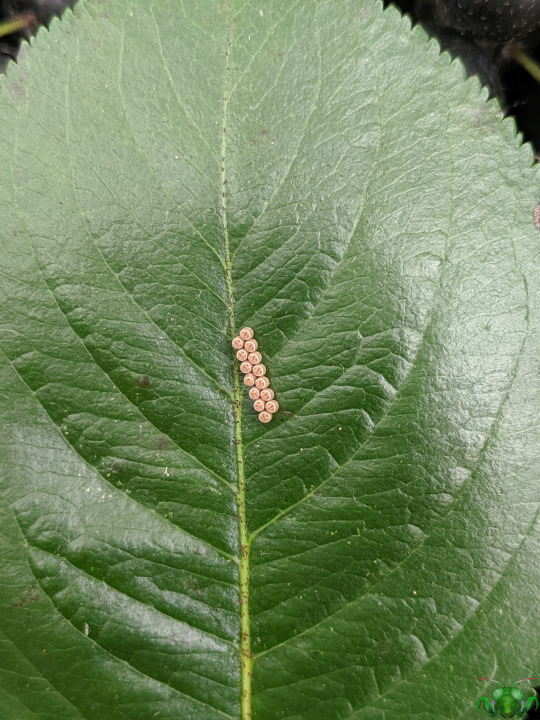
Stink Bug Eggs - Family Pentatomidae
This is a first, as it's not very often that I find insect eggs. Lucky for me, my dear friend Sarali found this cluster during her yearlong travel across Asia. I'm not aware on the context which these berries where found, but for an idea of the sense of scale in these pictures: the black (or possibly purple) chokeberries on display are likely between 7-12mm wide. With that knowledge in mind, an adult insect could easily fit a lot of egg clusters on just one of those small fruits! However, unless the insect in question is a specialist on fruit infiltration, a plant's leaves are the safer option, especially if the fruits are likely to be eaten. If the arrangement of this egg cluster is any indication, these eggs belong to a Stink Bug; they are quite fond of placing their eggs in hexagonal clusters. An adult Stinkbug is capable of laying several hundred eggs throughout her lifetime, so this is just a sample of the possibilities. The count does seem a bit low however (only 14), but nature is large, intricate system and there could be many reasons for such a small cluster (e.g., specie dependent, egg-laying was disturbed, smaller clusters laid across more plants/leaves, other eggs were eaten). Currently, I cannot determine which Stinkbug specie these eggs belong to or the age of these eggs.
Resources keep referring me to the Brown Marmorated Stink Bug, but the eggs don't match at all. It might be because of that particular insect can be found on chokeberry and is a common find, especially in its native range. It's likely something a bit more exotic that may be more familiar in South Korea compared to my limited understanding of that environment from Canada. Although at a glance they seem closer in appearance to the mature eggs of the Green Stinkbugs (Chinavia spp.). Perhaps a distant relative! Nevertheless, under normal conditions when these eggs hatch, the young Stinkbug nymphs move out and find a suitable location along a plant (either this one or another) to pierce it and absorb nutrients. Those that are lucky will molt several times and reach shield-shaped adulthood, and can then take flight to a new plant. In this case however, if these eggs hatched in proximity to the fruit, the nymphs could fall into the berries and become someone's breakfast! There's always a small chance, especially when it comes to ripened fruit, so it may be best to thoroughly wash food obtained from an outdoor market. It's the same over here as I think of the neighborhood grocery stores and the Yellowjackets enjoying bites of peach and packaged berries. Washing is best; these insects are not for eating.
Pictures were taken on July 31, 2019 in Korea with a Google Pixel.
#jonny's insect catalogue#insect#stinkbug#stinkbug eggs#insect eggs#hemiptera#heteroptera#pentatomidae eggs#south korea#korea#july2019#2019#nature#entomology#unidentified#asia insect#invertebrates#arthropods#arthropod eggs#animals#photography
2 notes
·
View notes
Text
Round 1 - Phylum Onychophora
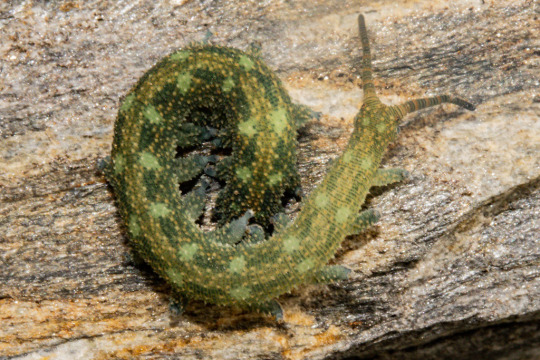
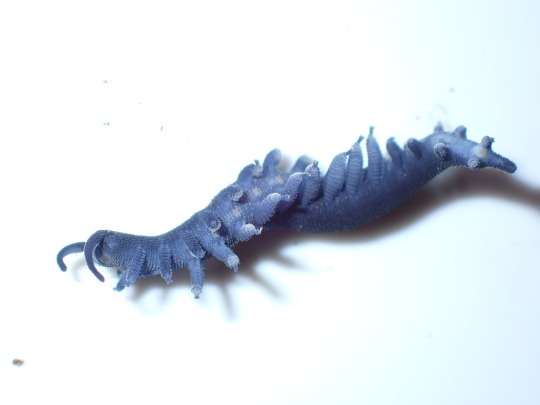
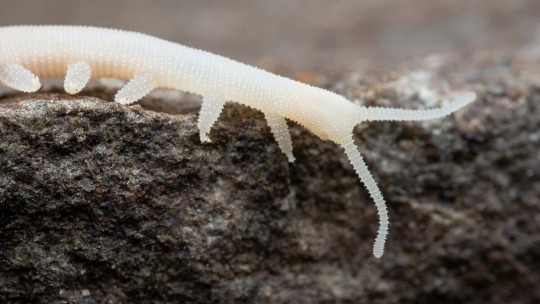
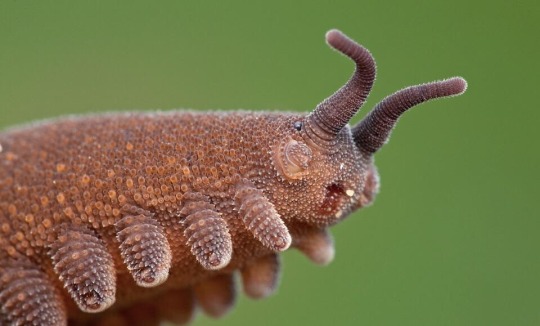
(Sources - 1, 2, 3, 4)
Onychophora is a phylum of long, soft-bodied, many-legged animals. They are commonly called Velvet Worms due to their velvety texture, and the human propensity for calling any small animal with a long body a worm. Onychophora is the only animal phylum in which every extant (non-extinct) member is fully terrestrial.
Onychophorans are predators, preying on other invertebrates which they catch by spraying an adhesive, glue-like slime. This slime can also be used to deter predators. They will target slime at the limbs of their prey, and have even been observed targeting the fangs of spiders. The slime is stretchy, with high tensile strength, and forms a net-like structure when sprayed. It takes about 24 days to replenish an exhausted slime repository, so they will eat their dried slime when they can.
Onychophoran legs are called oncopods, lobopods, or “stub feet”. They can have from 13 to as many as 43 pairs of feet, depending on species. Their legs are hollow and have no joints, instead being moved by the hydrostatic pressure of their fluid contents. Each foot has a pair of tiny chitin claws which they use to gain their footing on uneven terrain. They sense the world via a pair of antennae, the numerous papillae covering their bodies, and a pair of simple eyes, though there are some blind species. Their mouth is surrounded by sensitive lips, and their chitin jaws, used for chewing up prey, look similar to their claws. On either side of their mouth are the oral papillae, openings containing their slime glands. Unlike their relatives, the tardigrades and arthropods, they do not have a rigid exoskeleton, restricting them to habitats with high humidity. They are also nocturnal hunters, and shy away from light, leading them to be most active on rainy nights. Onychophorans have two sexes. Females are usually larger than males, and sometimes have more legs. In most species the males will secrete a pheromone from their many “armpits” to attract females. Mating procedures differ between species. Some species are live-bearing, and some are egg-laying. The oldest known fossil Onychophoran, Antennipatus, is known from the Late Carboniferous.
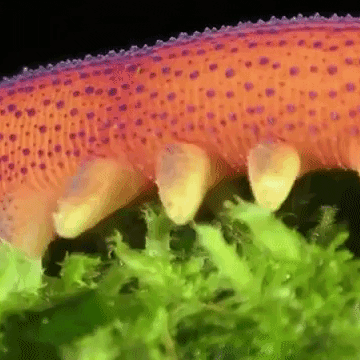
Propaganda under the cut:
The little orange guy in my avatar is a velvet worm!
Some species can spray their slime up to a foot away, though their accuracy gets worse with distance.
Apparently, velvet worm slime tastes "slightly bitter and at the same time somewhat astringent.” Don’t ask how biologists know that.
It is hard to evaluate all velvet worms due to their nocturnal nature and low population densities, but of the few species that have been evaluated, all are near threatened to critically endangered. Main threats come from habitat loss due to industrialisation, draining of wetlands, and slash-and-burn agriculture. Many species naturally have low population densities and small geographic ranges, so a small disturbance of ecosystem can lead to the extinction of entire species. Populations are also threatened by collection for universities or research institutes.
While most countries offer little to no protection for their velvet worms, Tasmania is unique for having its own velvet worm conservation plan and one region of forest dedicated to preserving the endangered Blind Velvet Worm, Leucopatus anophthalmus (seen in the 3rd image).
Onychophoran’s stub feet allow them to be sneaky ambush predators which hunt only at night. They move slowly and quietly, with their body raised off the ground. They only use their claws when needed for climbing, otherwise they walk softly on the pads of their feet. They are often able to get so close to their prey that they can gently touch them with their antennae to assess their size and nutritional value before the prey is alerted.
Onychophorans have small but complex brains, and are thus capable of sophisticated social interaction. Some species live and hunt in packs, acting in aggression and territoriality towards velvet worms not in their own group. After a kill, the dominant female always feeds first, followed in turn by the other females, then males, then the young. High-ranking individuals will chase and bite subordinates who climb on them, but will allow juveniles to climb on their backs without aggression.
Somft
419 notes
·
View notes
Text
this is some 'men are from mars, women are from venus' type shit
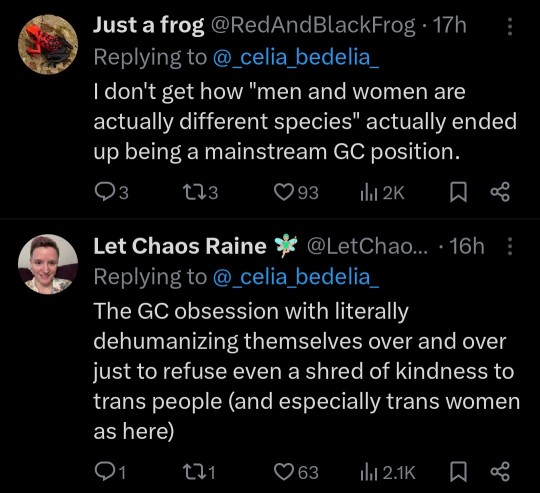




#does she know that the adaptations of the duck and the spider are not deliberate attempts by the female animal to 'stop the evil man penis#from penetrating the holy wombyn vagina'#they are just adaptations and not deliberate choices on the animals part to avoid penetration#you got a shield in your vagina?#no i don't think you've got more in common with the arthropod who produces egg cells than the person of the same species as you who happens#to have different flaps of body tissue on their crotch#generalization but terfs only really think of sex as being rigid#augh the whole gametes thing is a whole other kettle of fish#tw transphobia
14K notes
·
View notes
Text
Falmer appearance and attire headcanons
(click on drawings for more details and notes!)
Hair
In Skyrim, we pretty much only see two hair styles to go off of: completely bald and the hair the "shaman" have (which are also the only females we see (a post for another day)).
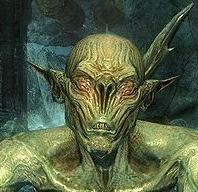
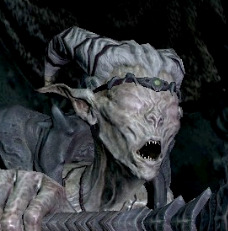
In concept art, particularly Adam Adamowicz's, we see more potential hairstyles. He draws it as wispy and messy, as well as containing braids and the ties we see in the shaman in the game. This art is largely what defines my own interpretation of their hair.


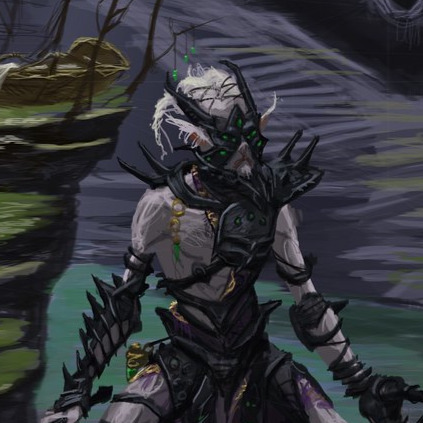
I picture the typical Falmer hair as wavy, thin, wispy, and looking frizzy. Given the high number of hairless Falmer we see, I imagine baldness is common, particularly among males, and sometimes among females. Their hair can be commonly styled into braids or knots to keep it under control.
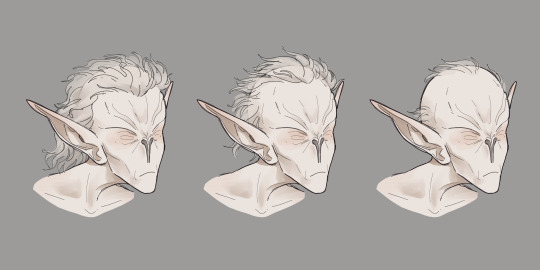
The ability to grow long, thick hair is less common, but those who can tend to style it in other unique ways. Especially among females, long hair is commonly styled into large dense locs (akin to a Polish plait) and held into shapes using ropes or leather ties.

(While I think the intention with the way their hair is drawn and modelled in the game models and concept art was that it was braided and held up with those ties, before looking at it closely I always sorta interpreted it as too stiff to just be braided. As a result, I developed the locs headcanon and have become kinda attached to it even though I have 0 in game or lore support for it)
Materials
The material used in their clothing is obviously dependent on what is accessible to them, and given their unique situation that makes the materials they use and value unique as well. In Skyrim, we see that almost all of their armor (which is mostly what we see them wearing) and homes are made of chaurus chitin (and potentially shellbug chitin), so this is likely the most common resource available to them for non-combative coverings as well. Other materials from their arthropods companions could include their cocoons, unhatched eggs, etc.
Bones from other creatures (draugr, skeevers, trolls, adventurers, bandits, etc.) underground or from aboveground raids could also be used fairly often. These could also provide a source of leather or fur, albeit not a lot of it.
Falmer groups and subcultures inside or in close proximity to Dwemer ruins probably make regular use of the materials present in those ruins as well. With all the metal and machinery present in Dwemer ruins, metal probably makes regular appearances in their clothing (and general decorations) even if they can't manipulate it themselves. Falmer more separated from Dwemer ruins would make much lesser use of these materials, however. Additionally, We see implications of Falmer preparing, cooking, and potentially cultivating fungus in-game, but see nothing indicating they have any plants in their diet, and therefore it is unlikely they regularly make or use textiles or fabrics in their clothing, and if they do they likely come form Dwemer ruins or raided adventurers/bandits/settlements from the surface.
On that note, we know that there have supposedly been incidents of Falmer coming to the surface to attack its inhabitants and travelers, as well as instances of them killing bandits, adventurers, and researchers who venture below, so it's not far fetched to believe that they have access to some materials from the surface. This could give them some access to furs from surface animals, beads, glass, jewelry, textiles, metal objects, etc. they might not otherwise have access to. The rarity of these material among the Falmer would depend on the amount of access any given group of Falmer have to the surface, but among many of them these materials could be seen as more valuable for their rarity and the difficulty to gain them.
While gemstones and ore might be accessible from both natural deposits and underground ruins, unless they had some kind of auditory function or unique texture, they might not have much value to Falmer.
General Attire/Accessories
I like to imagine that the Snow Elves, and by extension the Falmer, have an innate cold resistance in the same way Nords do, and therefore don't require clothes for the purpose of warmth even in the chilly caves of Skyrim. Additionally, their blindness likely means that wouldn't dress for visual aesthetic either. My thoughts are that they are then left with the sense of sound and touch to communicate with each other, and their clothing and accessories could reflect that.
Falmer clothing, decoration, and society in general is very heavily based on touch and texture and little on appearances. They touch each other very often for both communication, movement, and just general day-to-day interactions, and their clothes isn’t very modest, but the tactile patterns and materials used can communicate certain things such as position in society, “wealth”/power, whether they are taken, single, pregnant, with a child, etc., their roles, their age, notable achievements/skills, who is who, etc. on both their clothes and buildings. The more noise one makes, the more attention they draw and the more they drown out other noises, and the more noise making things they can “afford” to have, so the amount of noise one makes in a Falmer settlement is a status symbol. Certain types of noises or noise makers are more coveted than others (chitin beads are common, while furs are less common, and materials only gained from raiding the surface are rare and coveted).
Some noise making accessories could include:
Dangling metal, bones, beads, chitin, etc. that hangs off of their clothing or ears and jingle/clank against each other (in my drawing I show them as pretty uniform in shape and size, but they would probably be much more irregular than I depicted them)
Bells (metal or other materials) that are affixed to or dangle off of their clothing or as earrings.
Hollow bracelets, anklets, necklaces, or other accessories that are filled with rocks or beads.
Rattles tied to the body (made of chitin, dried hollow chaurus eggs, dried chaurus cocoons, beads, etc.) with leather or rope.
Flute or whistle like tubes made of metal, chitin, or dried and treated tube-like fungus that makes a woodwind-esque noise when air passes through it in a certain way. They have been designed to make noise easily from even the slightest movements.
Dried grasses (more temporary) tied to the body that make a swishy noise. More permanently, a similar thing can be achieved with hair. The hair can be sourced from Falmer (either through just cutting hair or through taking it from fallen enemies) or killed humans/mer/draugr. That sort of thing can also act as a kind of trophy.
Necklaces with various materials dangling close together that jingle against each other.
Various materials can be tied into braids or the leather ties in their hair as well.
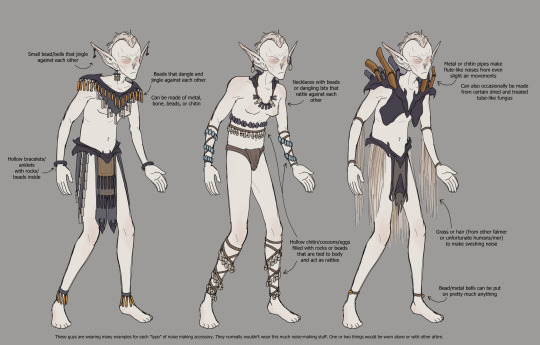
Some textural accessories could include:
Beads. Since they wouldn't have the ability to tell the color of the beads, the patterning of beadwork would be based on the roughness, material, size, or shape of the beads. (I'm sorry I suck as drawing beads)
Furs. This wouldn't be as common since the Falmer likely don't have too much interaction with furry mammals, but some they may have access to that are big enough to make clothing/accessories out of include skeevers or trolls (and potentially rarely animals from the surface). A potential meaning of wearing furs could be as hunting trophies, but it could have other meanings as well.
Chaurus chitin would like be the most common material in Falmer attire, and depending on the part of the chaurus body, the size of the chaurus, or the life stage of the chaurus it was sourced from it could have different textures. Some chitin parts could include large spikes and deep groves, while other parts could be smoother and less rough. The use of this chitin in clothing could take advantage of this contrast in textures. Additionally, chitin or shells from shell bugs might be a different texture from the chaurus chitin. (it's unclear to me whether shell bugs are exclusive to the caves around the Forgotten Vale or if we should consider them distributed throughout Skyrim's underground)
The placement of textured components on the body could have their own meaning to it alongside what accessories or textures are being used.
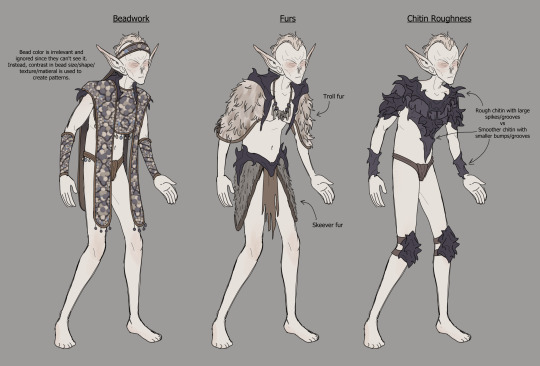
Specific Falmer Subcultures
While most Falmer settlements we see in Skyrim are just a small-ish collection of huts and chaurus corrals, there are two distinctive settlements that are larger, seemingly more organized, and I like to think have their own distinct subcultures worth mentioning: Blackreach and the Forgotten Vale. The unique scope and environment of these Falmer cities (as I like to think of them) could lend to unique clothing cultures as well.
The Falmer of Blackreach have access to a vast Dwemer settlement and have has the space to spread out throughout it more fully since it seems to be more in tact than other Dwemer ruins we see. These guys would likely have a clothing culture much more heavily based on what the can access from these Dwemer ruins (metal scraps, leftover fabrics, etc.)
The Falmer of the Forgotten Vale would also have access to unique resources, such as Vale deer, Vale sabre cats, and frost giants for fur and leather. Additionally, materials accessed from the Chantry of Auri-El such as textiles from clothing, bedding, tapestries, etc. could give them a greater access to fabrics than other Falmer groups. We don't see many close Dwemer settlements to the Vale, so they would have less Dwemeri influence in their clothing than other Falmer groups.
I like to think that the Falmer's evolution exclusively underground has made them poorly equipped to handle the outdoors during the day and has made them particularly susceptible to sunburn, necessitating the need for covering for those in the Forgotten Vale who have significant settlements outdoors. With greater access to textiles and leather, they could use them as coverings when outdoors.
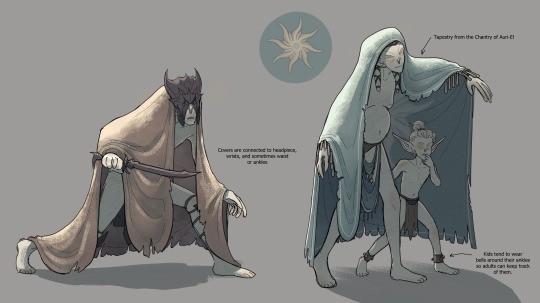
Armor
I actually have very few notes on armor, for two reasons. 1) I hate designing and drawing armor. It is the bane of my existence. 2) I really like the armor they have in game! I think they look awesome aesthetically, and I like how clearly they are made from chaurus chitin. Per usual, Adam Adamowicz's designs seem to have been the major inspiration for the Falmer armor, and he did a great jobs (even if it isn't the most functional looking armor ever).
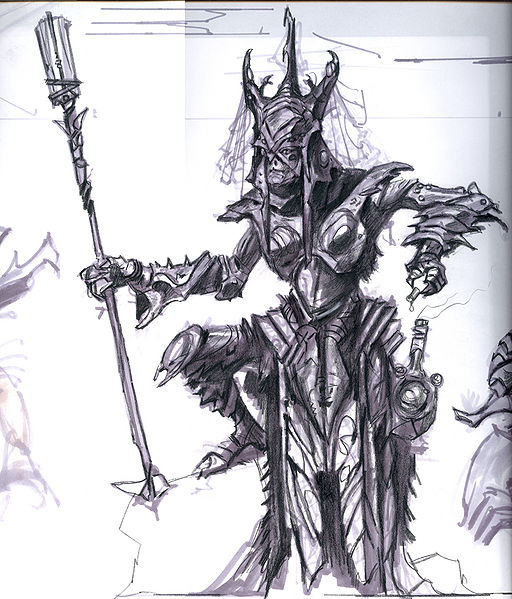
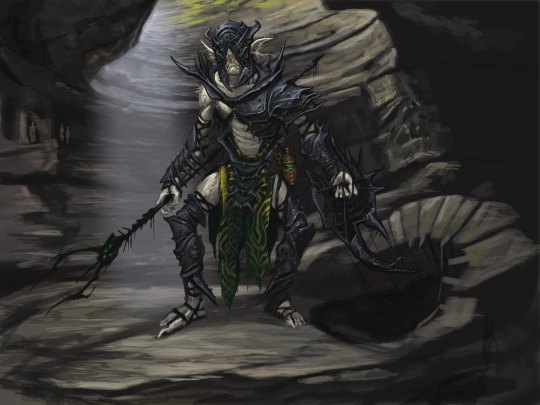

(off topic but I also just want to add that he draws them with little hairs and tufts on their ears and I love it. ok that is all)
I do have a few thoughts about armor though.
Even attire made of textiles make noise when someone moves in them, and I can imagine moving around in armor, especially armor made of hard, insect shells would make a lot of noise when someone moves around in it. When you're relying on sound to navigate your environment and pinpoint potential threats or targets, wearing something making a lot of noise would not be ideal. On the other hand, getting into a fight unarmored would be a problem.
So here's my solution: heavy armor (see below) would only be worm within the camps/settlements where noise was already high and space is more cramped (and therefore more risky in a fight) as a sort of guard in case they were attacked. Those guarding the settlements along the outside might still wear armor as well, but less of it. Those going out to scout or hunt (if they do hunt) would wear as little armor as possible, and try to wear it strategically so that it wouldn't rub against itself and make noise. This is why most Falmer we encounter in the game are wearing little except for loin cloths and kneepads.
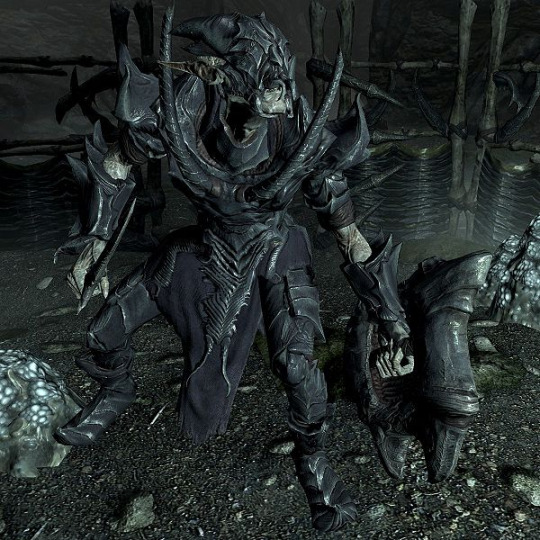

One more idea I have for armor is a specific armor piece. On the note of guarding or protecting a camp or settlement, I imagine the noises of it all (especially with the noise based headcanons I've laid out here) would make it hard to actually catch any potential threats when you can't see. A large slightly concave piece of armor worn behind the head could block out noises from behind the wearer, as well as a help focus sounds ahead of them.
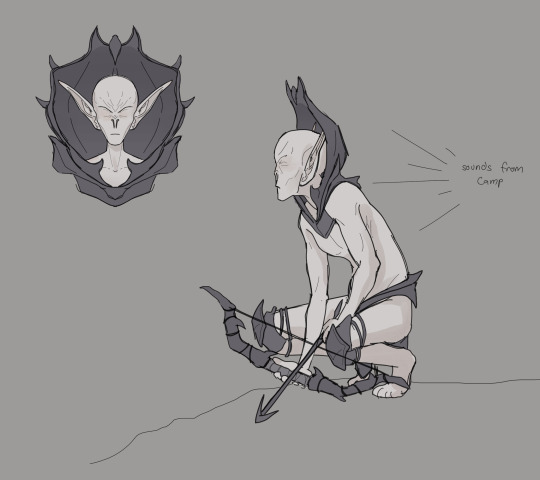
That is all! Thank you for reading! A lot of these concepts around the culture of sound I think could also be applied to their buildings and even a culture of music, but those are posts for another time.
All of the concept art I used was taken from here and all of the Skyrim screenshots are from UESP.
#skyrim#tes#the elder scrolls#falmer#skyrim headcanon#tes headcanons#headcanon#sorry this is long (but not really)#i just cant express my thoughts like a normal person. college conditioned me to format everything like an essay where i have to provide#sources and shit lol#also im kinda autistic about falmer#i appreciate those of you who read it all!#mine#adam's concept art makes me feel very validated in my echolocation headcanon because its very obvious he references bats in their face#which is another post idea i have for another day#my art
1K notes
·
View notes
Note
Many parasites takeover the minds and bodies of insects, spiders or other creatures, making them like zombies. You’ve listed some in spider-ween and other places. Do you know any parasites that take over bees? I know wasps lay their eggs in their larva, but haven’t really found anything about those that pilot a bee’s body.
Strepsipterans! Also frequently just called "Stylops"
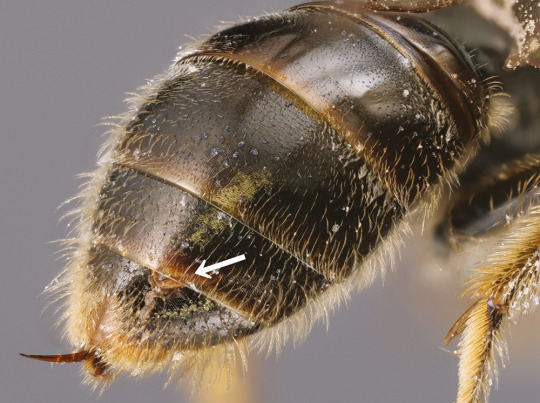
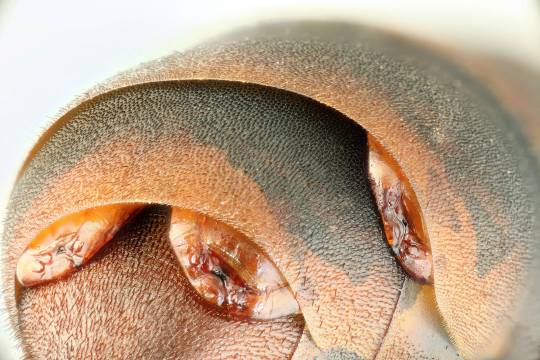
These are the weirdest most alien insect group in existence. What you're seeing are the head ends of the mature females; their bodies are just bags of tissue that absorb nutrients from the host, so they no longer have any trace of limbs or wings and their flat little heads no longer have mouths or eyes.

The only reason the female's heads stick out of the host at all is because the head evolved into the end they mate with. The short-lived mature male is a very tiny flying thing (whose anatomy is unlike any other insect alive today - a totally unique type of wing, unique eye arrangement, we have NO idea what these evolved from, except for some loose connections to beetles!) who mates by breaking through the female's featureless armored face with his bladed genitalia and then he dies. And Strepsiptera can be found infecting all sorts of arthropods, even apparently some arachnids, but none of those arthropods really tend to sit still when a little tiny flying man tries to land on them, so the females usually do something to their hosts (we aren't sure what exactly) to make them slower and more complacent. Social Hymenoptera like bees are especially common hosts though, and when a worker bee or wasp is infected by stylops, she actually abandons her colony and her duties for extended periods of time to just perch in one place while the parasite broadcasts its mating pheromones. This is especially eerie from the bee's perspective; a worker bee is a female bee that wasn't allowed to become a queen and isn't "supposed" to be going around mating, but now she's sitting around waiting for a male just like any other bug that wants to be a mom. It's just not a male of her species and she's not the one who gets to reproduce. Is the parasite tapping into buried queen behavior? Does the bee's little brain think it's calling for a drone to help it start a new hive? Or does the parasite just make the bee a lazy slob who stops caring about her hive and just feels like chilling out on a flower all day? We might never know.

Here are those unique eyes of the male for anyone wondering. Not set in a fine multifaceted grid like in other insects, but clustered, still set in their own individual "sockets" like we see in much more ancient arthropods like trilobites! This suggests that Strepsipteran eyes date back to when insects were first beginning to evolve towards true compound eyes, but there still aren't many insects in the fossil record that have anything else in common with these animals. EDIT: oh yeah I forgot to include that these are in the children's book made by @revretch and I!

I did the rough pencil sketch of this page while Rev did the beautiful inks! I felt kids should know about these animals but I tried to explain it in the most kid-friendly way possible.
2K notes
·
View notes
Text

November 25, 2024 - Pilotbird (Pycnoptilus floccosus) Found in southeastern Australia, these birds live in forests with heavy undergrowth. They eat arthropods, along with some seeds and fruit, foraging on the ground in pairs or family groups and sometimes following Superb Lyrebirds to capture fleeing insects. Breeding from August to February, pairs may raise two, or even three, broods a year. They build large domed nests with side entrances from bark, leaves, grass, rootlets, and feathers on or near the ground in dense vegetation. Females incubate clutches of two eggs while males feed them. The males care for the chicks while the females incubate the second and third clutches of eggs. Classified as Vulnerable by the IUCN, they have suffered rapid population declines caused by severe fires in 2020.
175 notes
·
View notes
Text


Peculiar Eggs
I thought these masses were a slime mold at first. Apparently they're Mantidfly eggs.
Unidentified, family Mantispidae
22/03/23
#Mantispidae#Mantidflies#eggs#Neuroptera#invertblr#invertebrates#Arthropods#Arthropoda#bugs#bugblr#bugs tw#insects#insecta#insectblr#entomology
33 notes
·
View notes
Text
African Social Spiders: these spiders live in colonies that can contain up to 2,000 spiders, most of which are female; they hunt, forage, maintain their web, and raise their offspring as a group, without any dominance hierarchy or caste system
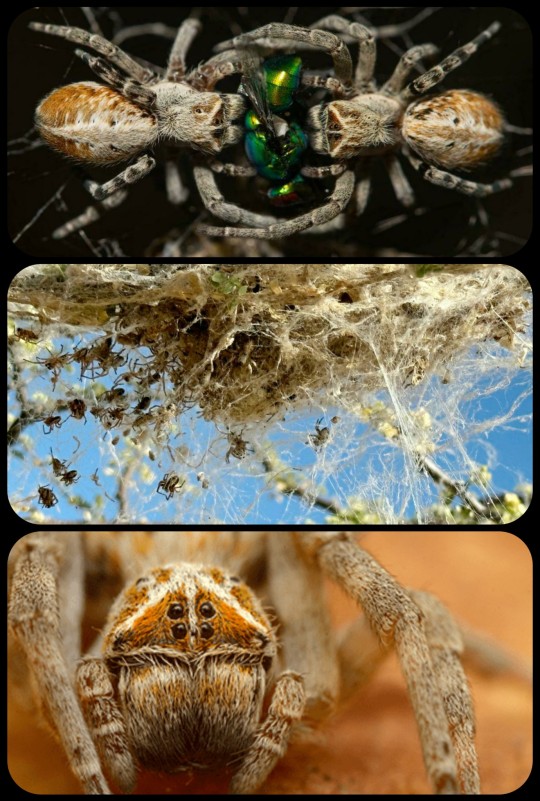
This communal behavior is extremely rare among spiders, which are normally solitary creatures. The African social spider (Stegodyphus dumicola) is one of the few species that has been identified as a true "social spider," forming colonies and living in communal nests where the spiders work together to hunt, forage, build webs, and care for their offspring.

Above: an African social spider feeding the young spiderlings of her colony by regurgitating food for them, exhibiting a level of maternal/allomaternal care that is relatively uncommon in both spiders and insects
African social spiders can be found in various parts of southwestern Africa, where they will often build a dense silk nest in the branches of a thorn tree and/or shrub. Most of the spiders in the colony are female (more than 85%, according to some studies) and the species itself also has a female-biased primary sex ratio, as researchers have found that female embryos develop in more than 80% of the eggs that the spiders produce.
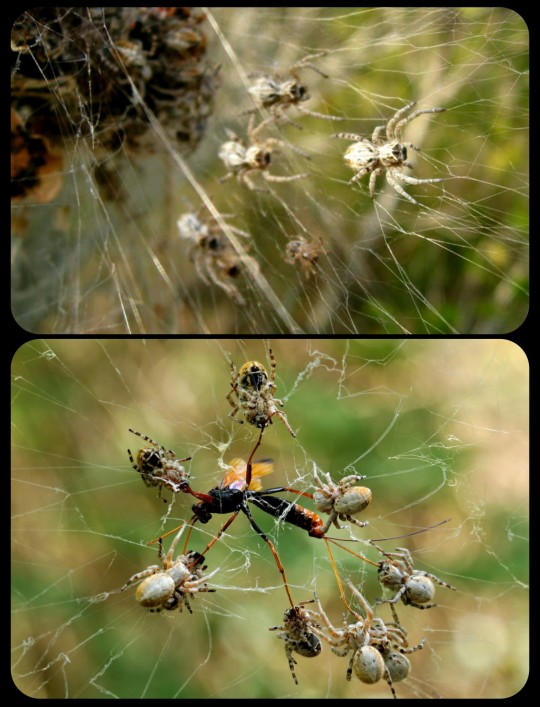
Above: a group of African social spiders working together to subdue their prey, which will be taken back to the nest so that it can be shared with the rest of the colony
There is no evidence that any dominance hierarchy or caste system exists within S. dumicola colonies. The spiders all cooperate to complete a variety of tasks, such as hunting, repairing the web, foraging, defending the colony, caring for the colony's offspring, etc. While none of them are exclusively assigned to a single task, many have a primary role that they fill, often based on their physical size and condition.
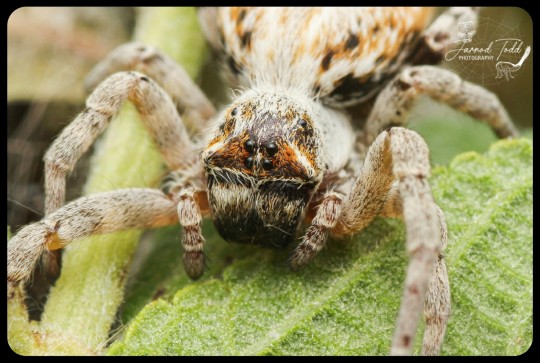
Above: close-up photo of S. dumicola
This species also engages in extreme allomaternal care, meaning that many different spiders (including both mothers and "allomothers") all share the responsibility of caring for the colony's offspring; even the unmated females help out with brood care. The mothers/allomothers tend to the eggsacs, regurgitate food for the baby spiderlings, and even engage in matriphagy, which means that they will eventually be cannibalized by the babies.
From The Encyclopedia of Animal Behavior:
... some proportion of females do not reproduce – sometimes as much as 60% – but remain as helpers, contributing to foraging and brood care (allo-mothering). Both breeding females and virgin allo-mothers regurgitate food for colony offspring and eventually let the young consume their bodies. ...
Young that are raised with both mothers and allo-mothers show higher survival and growth than young raised by their mothers alone, suggesting a clear fitness benefit of cooperative breeding.
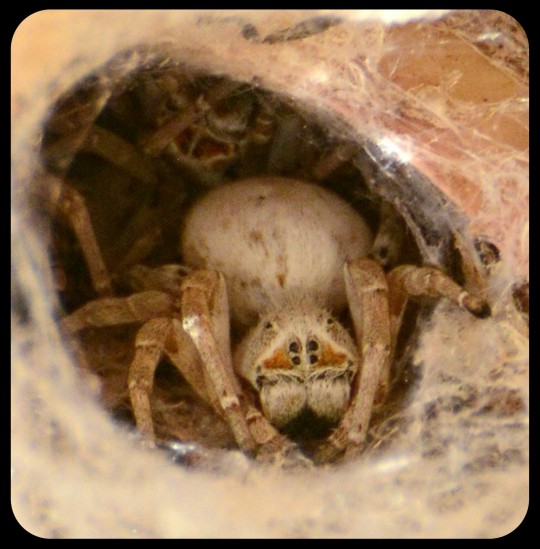
Spiders of this species generally measure about 2.5 - 3.5mm long; they can be found in Namibia, Botswana, Zimbabwe, South Africa, Lesotho, and Eswatini.
Sources & More Info:
Science Direct: Social Spiders
Current Biology: Quick Guide to Social Spiders (PDF)
Phys.org: Untangling the Social Lives of Spiders
Proceedings of the Royal Society B: The Age & Evolution of Sociality in Stegodyphus Spiders
Entomology Today: Social Spiders Divide Labor According to Body Size & Condition
Animal Behaviour: Extreme Allomaternal Care by Unmated Females in a Cooperatively Breeding Spider
National Geographic: Baby Spiders Eat their Mothers
University of Portsmouth: Social Spiders Have Different Ways of Hunting in Groups
Behavioral Ecology: Spider Societies Mitigate Risk by Prioritizing Caution
Behavioral Processes: Warring Arthropod Societies
Behavioral Ecology and Sociobiology: Does the African Social Spider Stegodyphus dumicola Control the Sex of Individual Offspring?
#arachnology#spiders#african social spiders#stegodyphus#dumicola#arthropods#arachnids#allomaternal#matriphagy#communal spiders#social spiders#cool bugs#animal facts#tw arachnophobia#cw spiders#anarcho-feminism?#more like arachno-feminism#just a bunch of radfem commie cannibals
260 notes
·
View notes